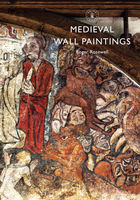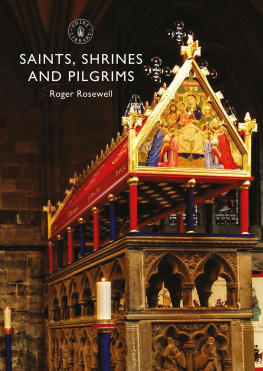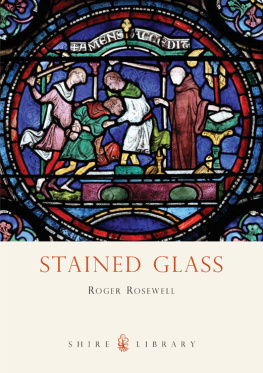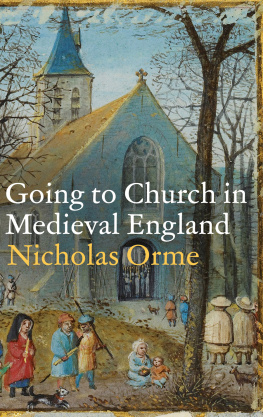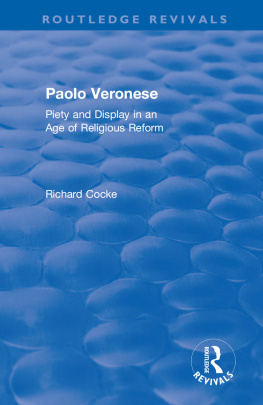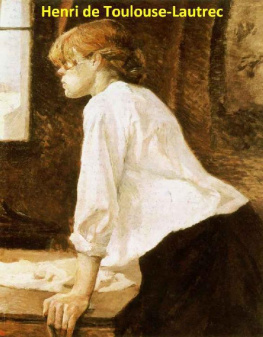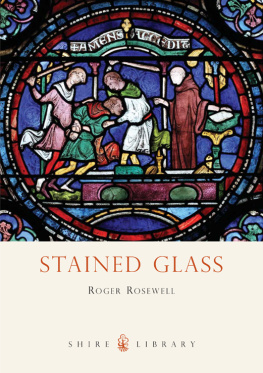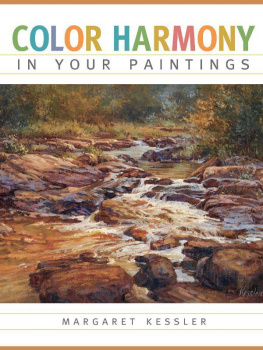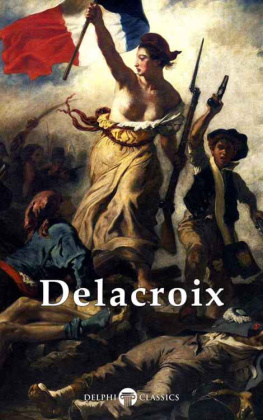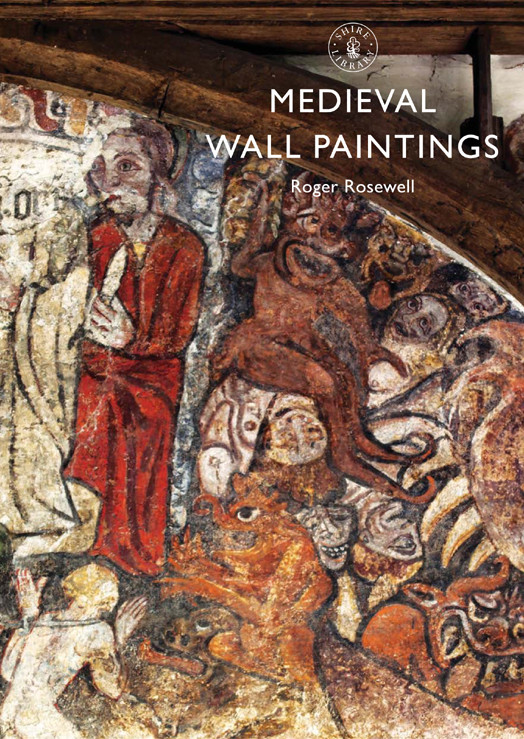
MEDIEVAL WALL PAINTINGS
Roger Rosewell
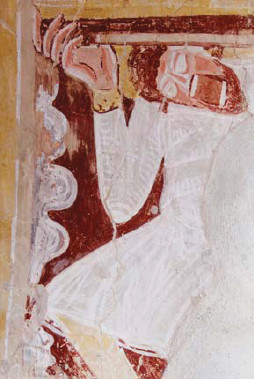
Atlas, c. 110020, Coombes Church, Coombes (West Sussex).

SHIRE PUBLICATIONS
CONTENTS
INTRODUCTION
THE PAINTED CHURCH
THE PURPOSE OF WALL PAINTINGS
THE SUBJECTS: THE BIBLE AND SAINTS
THE SUBJECTS: DEATH AND JUDGEMENT
THE SUBJECTS: PIETIES AND TRANSGRESSIONS
TEXT AND OTHER SUBJECTS
MAKING WALL PAINTINGS
WALL PAINTINGS AND THE OTHER ARTS
REFORMATION AND AFTERWARDS
DOMESTIC WALL PAINTINGS
SURVIVAL AND CONSERVATION
FURTHER READING
GAZETTEER
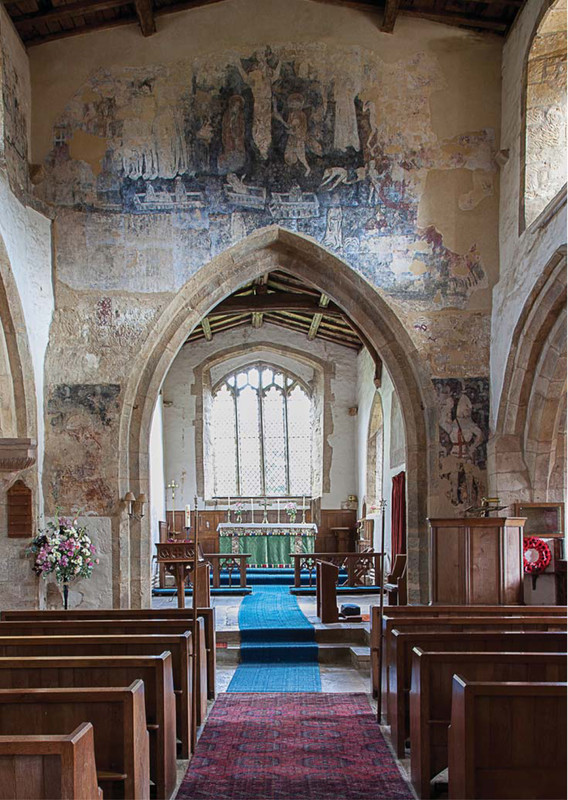
The painted church: the Last Judgement above the chancel arch and saints on the lower wall, late fourteenth century, Church of St John the Baptist, Hornton (Oxon).
INTRODUCTION
THE PARISH CHURCH at Hornton in Oxfordshire is one of hundreds of buildings that retain important examples of medieval wall paintings perhaps the most enigmatic art of the Middle Ages.
Although such survivals are often fragmentary and sometimes difficult to decipher, the best of these paintings still have the power to evoke a world very different from and yet remarkably similar to our own, troubled by questions about fate, salvation, morality and justice.
At Hornton the entire eastern wall of the chancel is painted. The lower walls depict, on the north side, the Virgin Mary cradling the dead Christ and on the other, the warrior knight, St George, vanquishing a ferocious dragon. Above the chancel arch the dead emerge from their graves to learn their fate everlasting bliss in Heaven or eternal damnation in the flames of Hell an image known as the Doom or Last Judgement, which would have been found in every medieval church before the Reformation caused their interiors to be stripped and the walls covered in whitewash.
Together with stained glass windows and other furnishings, such paintings helped to transform even the most humble church into a place of holiness and wonder, divine mystery, and miraculous salvation. They were commissioned by wealthy patrons or donors, powerful institutions such as monasteries, and sometimes by public subscription. Similar paintings adorned churches elsewhere in Western Europe with good examples still surviving in Denmark, France, Italy, and Spain. According to the thirteenth-century Spanish bishop, Lucas of Tuy, writing around 1230, wall paintings helped the house of God ... elevate the mind to heavenly things [and represent] the beauty of the heavenly home.
This book is about these paintings in churches. It explains why they were made, the subjects they showed, how painters created them, and their relationship with other arts. It also describes what triggered their destruction, what replaced them, and the efforts of modern-day conservators to save them for future generations. A separate chapter discusses domestic wall paintings of the period. Also included is a Further Reading section, followed by a Gazetteer, in which interesting examples of wall paintings are listed.
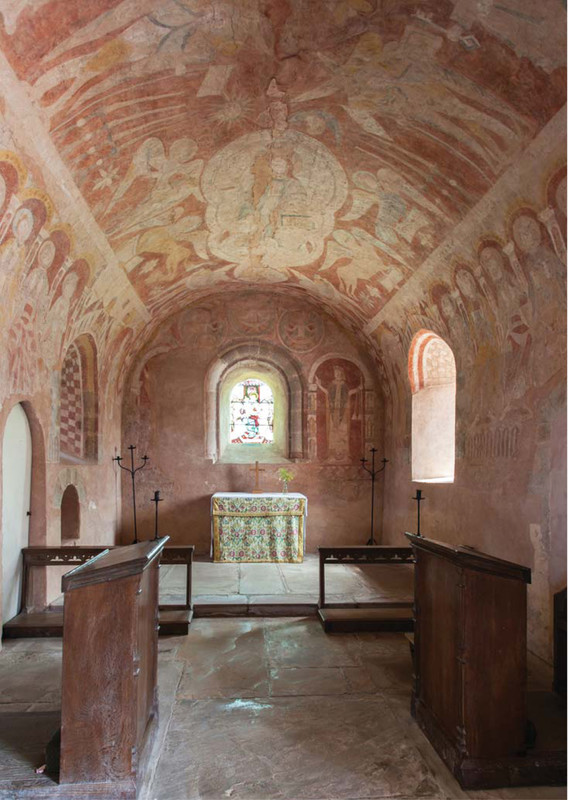
Wall paintings depicting the Book of Revelation, the chancel, c. 113040, Church of St Mary, Kempley (Glos).
THE PAINTED CHURCH
WALL PAINTINGS decorated churches from the Christian conversion of Anglo-Saxon England in the seventh century until the Reformation eight hundred years later. They were often cheap and quick to make. The earliest paintings consisted of simple decorative designs, inscriptions in Roman style lettering and figurative images at the eastern end of the building. Angels censing a now lost seated figure of Christ as ruler of the world (Majestas Domini, Christ in Majesty), above the chancel arch at Nether Wallop (Hants), are painted in the same fluttery style as contemporary Anglo-Saxon manuscript illuminations produced in Winchester around AD 1000.
Important remains of twelfth-century Norman paintings (sometimes called Romanesque as they drew on the earlier art of ancient Rome) can be seen at Houghton-on-the-Hill (Norfolk) and in several Sussex churches including Hardham, Clayton, and Coombes (often known as the Lewes Group on the assumption that they may have belonged to the monastic priory of St Pancras at Lewes). At Houghton and Clayton the paintings are concentrated at the eastern end of the church but at Hardham the scheme covers every wall and includes large-scale decorative and figurative designs.
At Canterbury Cathedral (Kent), a church served by an adjacent monastery, a scheme of c. 1130 in a crypt chapel includes figures holding scrolls painted with Latin inscriptions, which the monks would have almost certainly been able to read.
At Kempley (Glos), twelfth-century wall paintings in the chancel of this small church summarise the Book of Revelation, the final book of the New Testament, St Johns apocalyptic prophesy of the destruction of the world and the second coming of Christ. At East Shefford (Berks) a scheme of a similar date depicting the Adoration of the Magi (the three kings) incorporates blocks of intense colour.
By contrast to these survivals, examples of Romanesque painting in Scotland and Wales are extremely rare. A few painted stones at Glasgow Cathedral have been dated to the twelfth century; the eastern wall of the presbytery at Ewenny Priory (Glamorgan) has a scheme of c. 1140.
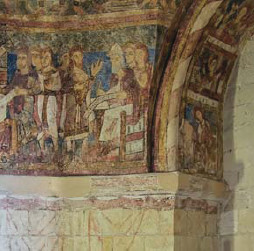
Detail of the Naming of St John, c. 1130, St Gabriels Chapel, Canterbury Cathedral (Kent).
Changes in artistic and architectural styles from the thirteenth century onwards had far-reaching effects for wall painters. The power and monumentality of Romanesque paintings gave way to Gothic elegance with figures adopting the swaying S shape posture developed by French artists, as at Little Wenham (Suffolk) and Turvey (Beds). Displays of heraldic decoration appeared at Silchester (Hants) and elsewhere. New subjects and designs also proliferated as the church placed a greater emphasis on teaching the fundamental tenets of Christianity to their congregations and lay people became responsible for the decoration of the public part of the church, the nave.
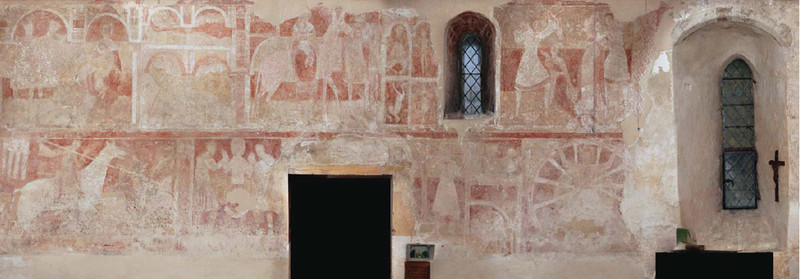
Nave wall paintings at the Church of St Botolph, Hardham (West Sussex), c. 110020. Upper tier, Infancy of Christ; lower tier, Life of St George.
The architectural fashion for larger window openings posed particular problems for wall painters as churches became virtual cages for glass. One consequence was that large-scale coherent schemes, designed and painted across contiguous expanses of wall space, became rarer as the available space shrank. Most churches seem to have had mix and match schemes, perhaps of different dates and sizes. Some walls have three and more subjects painted on them, divided by decorative borders. It may have been that this bricolage effect was intentional. Two surviving exceptions include Pickering (Yorks), where the arrangement of the subjects matches a church calendar, and Eton College Chapel (Berks), where a scheme in two registers or tiers painted between
Next page
